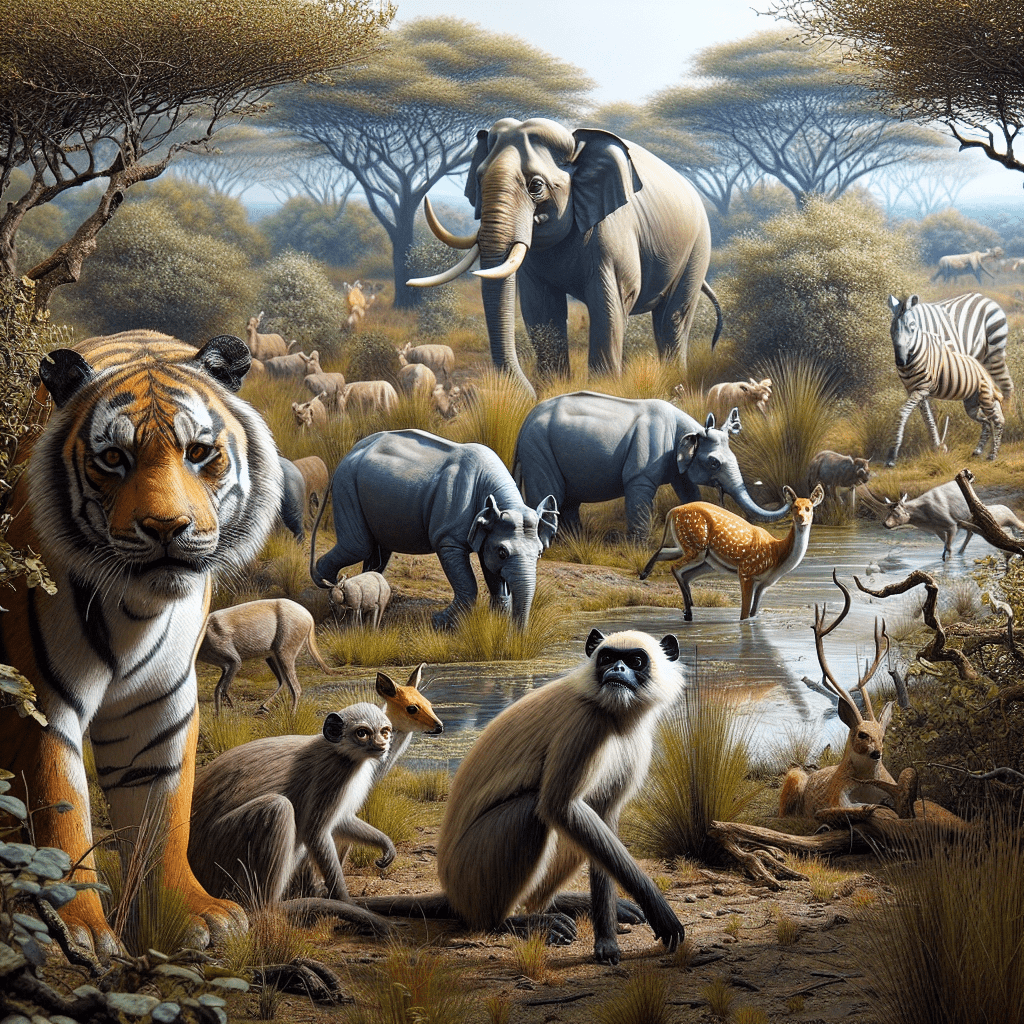Indian mammals encompass a diverse range of species that play a vital role in the country’s ecosystems. Mammals are a class of animals characterized by their ability to nurse their young with milk and possess hair or fur. India is home to a vast array of mammal species, showcasing its rich biodiversity. Studying Indian mammals is crucial for understanding their ecological significance, conservation needs, and the overall health of the ecosystem.
Classification and Taxonomy of Indian Mammals
Mammals can be classified into various orders based on their characteristics and evolutionary relationships. In India, notable mammalian orders include Carnivora, Artiodactyla, Primates, and Rodentia. These orders consist of families and genera that are unique to the Indian subcontinent, such as Felidae (cats), Cervidae (deer), and Hominidae (primates).
Major Habitats and Distribution
India boasts diverse ecosystems ranging from the Himalayas in the north to the coastal regions in the south. These habitats include forests, grasslands, wetlands, deserts, and marine environments. Each of these ecosystems supports a distinct set of mammal species. For example, the Western Ghats are known for their endemic species, while the Sundarbans mangrove forests are home to the elusive Bengal Tiger.
Flagship Mammals of India
Flagship mammals are species that serve as symbols of conservation and attract public attention. In India, some of the flagship mammal species include the Bengal Tiger, Indian Elephant, and Indian Rhinoceros. The Bengal Tiger is renowned for its majestic appearance and is primarily found in the Indian subcontinent. The Indian Elephant, the largest land animal in Asia, is revered in Indian culture and plays a significant role in the country’s religious and historical traditions. The Indian Rhinoceros, with its distinctive one-horned appearance, is endemic to the Indian subcontinent and is a symbol of conservation success.
Endangered and Threatened Mammals
Several mammal species in India face the threat of extinction due to various factors such as habitat loss, poaching, and human-wildlife conflict. The Snow Leopard, known for its elusive nature, is one of the most endangered mammals in India. It inhabits the high-altitude regions of the Himalayas and faces challenges due to climate change and hunting. The Asiatic Lion, once on the brink of extinction, is now found only in the Gir Forest of Gujarat. The Nilgiri Tahr, a mountain-dwelling ungulate, is endemic to the Nilgiri Hills and faces habitat loss and fragmentation.
Mammals in Indian Folklore and Culture
Indian culture and folklore are deeply intertwined with the presence of mammals. Many mammal species hold mythological significance and are revered in religious rituals and ceremonies. For example, the monkey god Hanuman is an integral part of Hindu mythology, while the elephant-headed god Ganesha is widely worshiped. Mammals have also influenced Indian art, literature, and traditions. Depictions of animals can be seen in ancient cave paintings, sculptures, and traditional dances.
Unique Adaptations of Indian Mammals
Indian mammals have evolved various adaptations to survive in their specific habitats. Desert adaptations are seen in species like the Indian Desert Jird, which has the ability to conserve water and withstand high temperatures. High-altitude adaptations are observed in the Himalayan Musk Deer, which has specialized hooves for traversing steep slopes and thick fur for insulation. Aquatic adaptations are evident in marine mammals like the Gangetic Dolphin, which has streamlined bodies and flippers for efficient swimming.
Mammals and Human-Wildlife Conflict
Human-wildlife conflict is a significant issue in India, particularly in rural areas where people depend on agriculture and livestock for their livelihoods. Crop raiding by mammals like elephants and wild boars can lead to significant economic losses for farmers. Livestock predation by predators such as tigers and leopards also poses a threat to the livelihoods of communities living near protected areas. Conservation efforts, including the implementation of mitigation measures like electric fences and compensation schemes, aim to reduce conflicts and promote coexistence.
Wildlife Conservation and Protection
India has a vast network of national parks and wildlife sanctuaries dedicated to the protection and conservation of its diverse mammal species. These protected areas serve as crucial habitats for endangered and threatened species and provide opportunities for research, education, and ecotourism. Additionally, various conservation organizations and initiatives, both governmental and non-governmental, work tirelessly to conserve Indian mammals and their habitats through research, advocacy, and community engagement.
Future Challenges and Opportunities
Indian mammals face numerous challenges in the face of climate change and unsustainable development practices. Rising temperatures, habitat fragmentation, and changes in precipitation patterns pose threats to the survival of many species. However, there are also opportunities for conservation, such as integrating sustainable development practices that prioritize biodiversity conservation, promoting community-based conservation initiatives, and raising awareness about the importance of Indian mammals and their habitats.
Conclusion
Indian mammals are a vital part of the country’s ecosystems, cultural heritage, and identity. Studying and conserving these species is essential for maintaining ecological balance, preserving biodiversity, and ensuring the well-being of both wildlife and human communities. By appreciating and protecting Indian mammals, we can contribute to the sustainable future of these incredible creatures and the ecosystems they inhabit.

